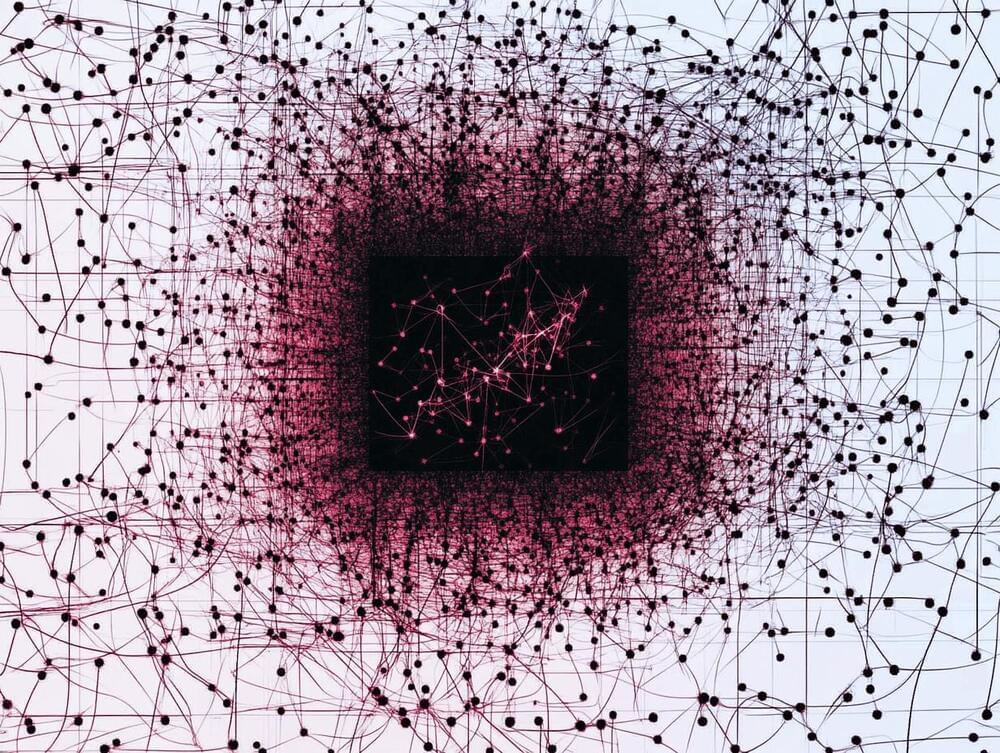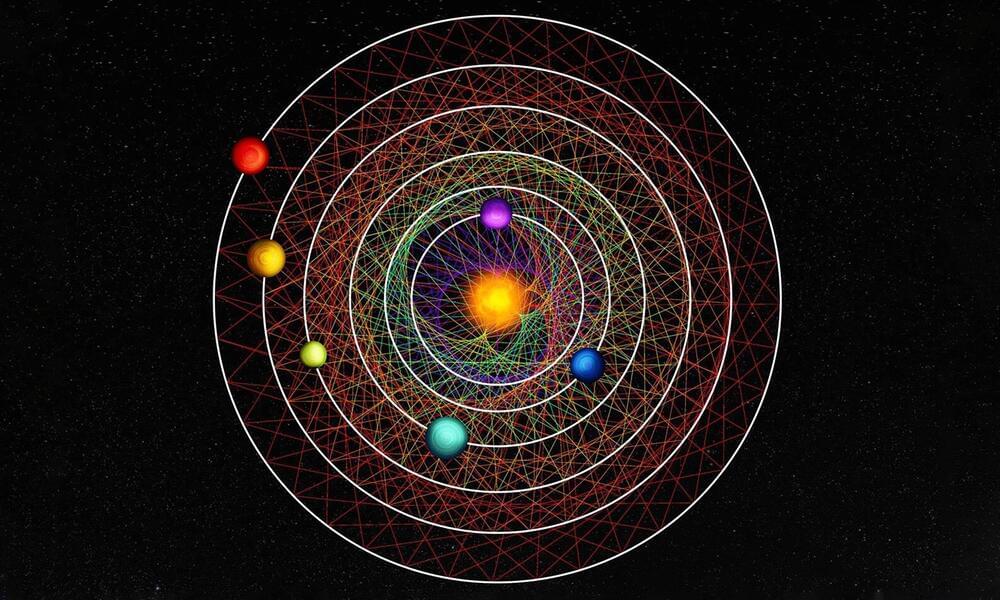Researchers find a mathematical key to understanding how AI makes decisions.



Quantum computers may soon dramatically enhance our ability to solve problems modeled by nonreversible Markov chains, according to a study published on the pre-print server arXiv.
The researchers from Qubit Pharmaceuticals and Sorbonne University, demonstrated that quantum algorithms could achieve exponential speedups in sampling from such chains, with the potential to surpass the capabilities of classical methods. These advances — if fully realized — have a range of implications for fields like drug discovery, machine learning and financial modeling.
Markov chains are mathematical frameworks used to model systems that transition between various states, such as stock prices or molecules in motion. Each transition is governed by a set of probabilities, which defines how likely the system is to move from one state to another. Reversible Markov chains — where the probability of moving from, let’s call them, state A to state B equals the probability of moving from B to A — have traditionally been the focus of computational techniques. However, many real-world systems are nonreversible, meaning their transitions are biased in one direction, as seen in certain biological and chemical processes.

Western researchers have developed a novel technique using math to understand exactly how neural networks make decisions—a widely recognized but poorly understood process in the field of machine learning.
Many of today’s technologies, from digital assistants like Siri and ChatGPT to medical imaging and self-driving cars, are powered by machine learning. However, the neural networks —computer models inspired by the human brain —behind these machine learning systems have been difficult to understand, sometimes earning them the nickname “black boxes” among researchers.
“We create neural networks that can perform specific tasks, while also allowing us to solve the equations that govern the networks’ activity,” said Lyle Muller, mathematics professor and director of Western’s Fields Lab for Network Science, part of the newly created Fields-Western Collaboration Centre. “This mathematical solution lets us ‘open the black box’ to understand precisely how the network does what it does.”
00:00 — Self-Improving Models.
00:23 — AllStar Math Overview.
01:34 — Monte-Carlo Tree.
02:59 — Framework Steps Explained.
04:46 — Iterative Model Training.
06:11 — Surpassing GPT-4
07:18 — Small Models Dominate.
08:01 — Training Feedback Loop.
10:09 — Math Benchmark Results.
13:19 — Emergent Capabilities Found.
16:09 — Recursive AI Concerns.
20:04 — Towards Superintelligence.
23:34 — Math as Foundation.
27:08 — Superintelligence Predictions.
Join my AI Academy — https://www.skool.com/postagiprepardness.
🐤 Follow Me on Twitter https://twitter.com/TheAiGrid.
🌐 Checkout My website — https://theaigrid.com/
Links From Todays Video:
https://arxiv.org/pdf/2501.
Welcome to my channel where i bring you the latest breakthroughs in AI. From deep learning to robotics, i cover it all. My videos offer valuable insights and perspectives that will expand your knowledge and understanding of this rapidly evolving field. Be sure to subscribe and stay updated on my latest videos.
Was there anything i missed?
(For Business Enquiries) [email protected].

The amorphous state of matter is the most abundant form of visible matter in the universe, and includes all structurally disordered systems, such as biological cells or essential materials like glass and polymers.
An amorphous material is a solid whose molecules and atoms form disordered structures, meaning that they do not occupy regular, well-defined positions in space.
This is the opposite of what happens in crystals, whose ordered structure facilitates their mathematical description, as well as the identification of those “defects,” which practically control the physical properties of crystals, such as their plastic yielding and melting, or the way an electric current propagates through them.

In the early 20th century, the mathematician Godel showed that any mathematical system is incomplete, using a version of the self-referential paradox: ‘this sentence is not true’. Here, neuroscientist and philosopher, Erik Hoel, argues this incompleteness extends to the scientific project as a whole; in part due to science’s reliance on mathematics. More radically, Hoel argues, this incompleteness of science may account for why we can’t find scientific evidence for consciousness anywhere in the world.
Let’s say you lived in a universe where you really were some sort of incarnated soul in a corporeal body. Or some sort of agent from a vaster reality embedded in a simulation (depending on definitions, the two scenarios might not be that different). What would the science in such a dualistic universe look like?
Sign up to get exclusive access.

Exploring the most important questions we face as we age.
Dr. Debra Whitman, Ph.D. is Executive Vice President and Chief Public Policy Officer, at AARP (https://www.aarp.org/) where she leads policy development, analysis and research, as well as global thought leadership supporting and advancing the interests of individuals age 50-plus and their families. She oversees AARP’s Public Policy Institute, AARP Research, Office of Policy Development and Integration, Thought Leadership, and AARP International.
Dr. Whitman is an authority on aging issues with extensive experience in national policy making, domestic and international research, and the political process. An economist, she is a strategic thinker whose career has been dedicated to solving problems affecting economic and health security, and other issues related to population aging.
As staff director for the U.S. Senate Special Committee on Aging, Dr. Whitman worked across the aisle to increase retirement security, lower the cost of health care, protect vulnerable seniors, safeguard consumers, make the pharmaceutical industry more transparent, and improve our nation’s long term care system.
Before that, Dr. Whitman worked for the Congressional Research Service as a specialist in the economics of aging. She provided members of Congress and their staff with research and advice, and authored analytical reports on the economic impacts of current policies affecting older Americans, as well as the distributional and intergenerational effects of legislative proposals.

A team of math and AI researchers at Microsoft Asia has designed and developed a small language model (SLM) that can be used to solve math problems. The group has posted a paper on the arXiv preprint server outlining the technology and math behind the new tool and how well it has performed on standard benchmarks.
Over the past several years, multiple tech giants have been working hard to steadily improve their LLMs, resulting in AI products that have in a very short time become mainstream. Unfortunately, such tools require massive amounts of computer power, which means they consume a lot of electricity, making them expensive to maintain.
Because of that, some in the field have been turning to SLMs, which as their name implies, are smaller and thus far less resource intensive. Some are small enough to run on a local device. One of the main ways AI researchers make the best use of SLMs is by narrowing their focus—instead of trying to answer any question about anything, they are designed to answer questions about something much more specific—like math. In this new effort, Microsoft has focused its efforts on not just solving math problems, but also in teaching an SLM how to reason its way through a problem.

Quantum mechanics has long classified particles into just two distinct types: fermions and bosons.
Now physicists from Rice University in the US have found a third type might be possible after all, at least mathematically speaking. Known as a paraparticles, their behavior could imply the existence of elementary particles nobody has ever considered.
“We determined that new types of particles we never knew of before are possible,” says Kaden Hazzard, who with co-author Zhiyuan Wang formulated a theory to demonstrate how objects that weren’t fermions or bosons could exist in physical reality without breaking any known laws.